
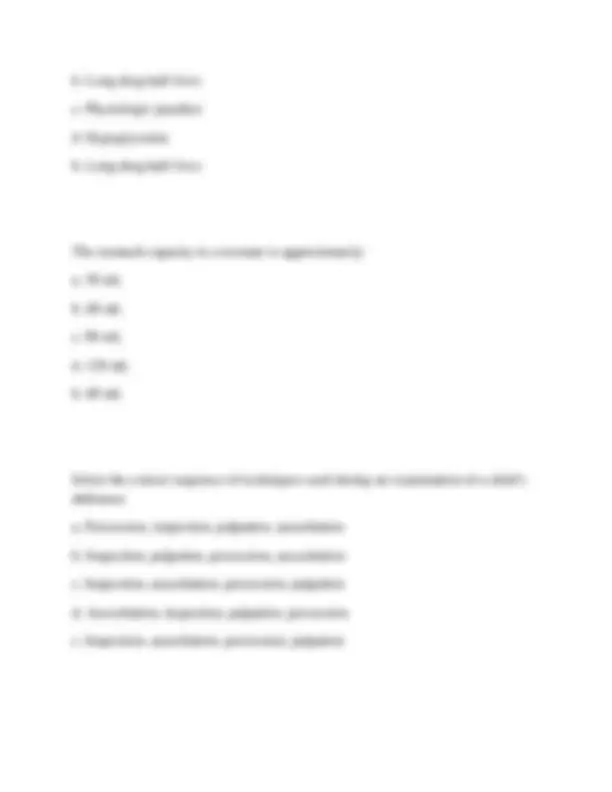
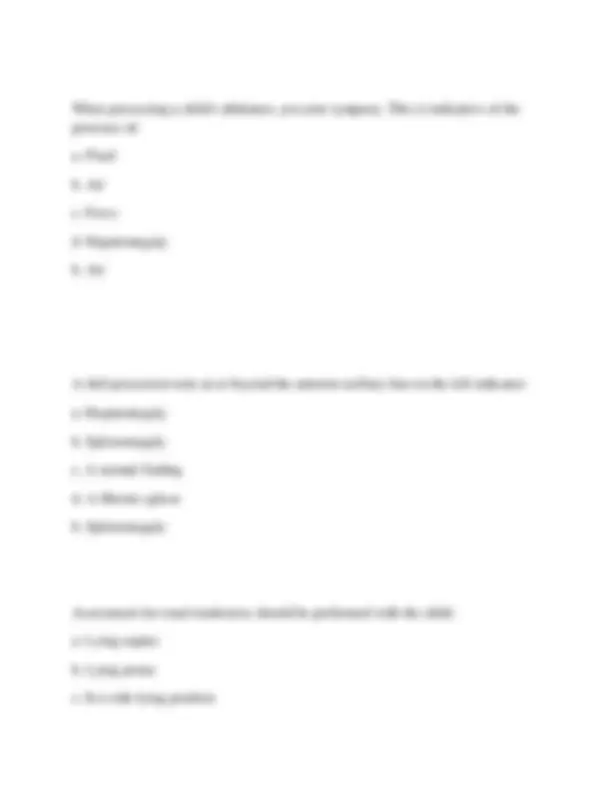
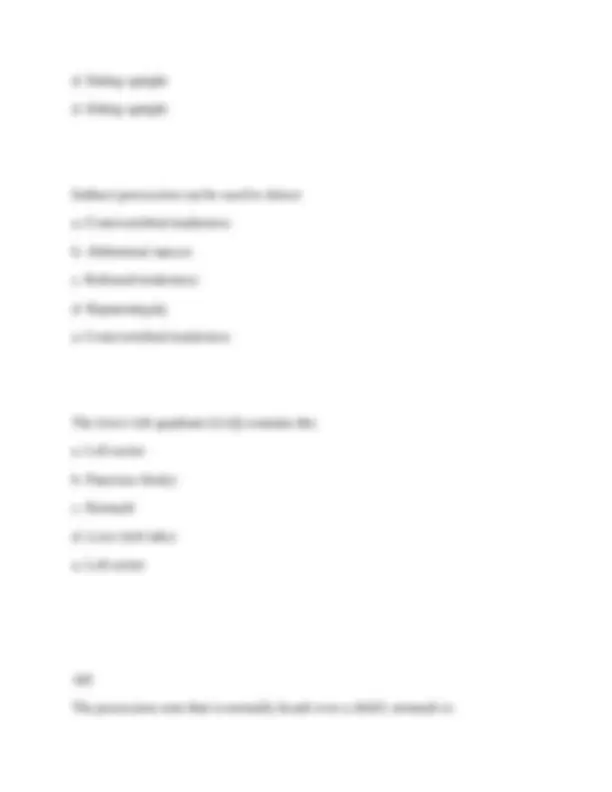
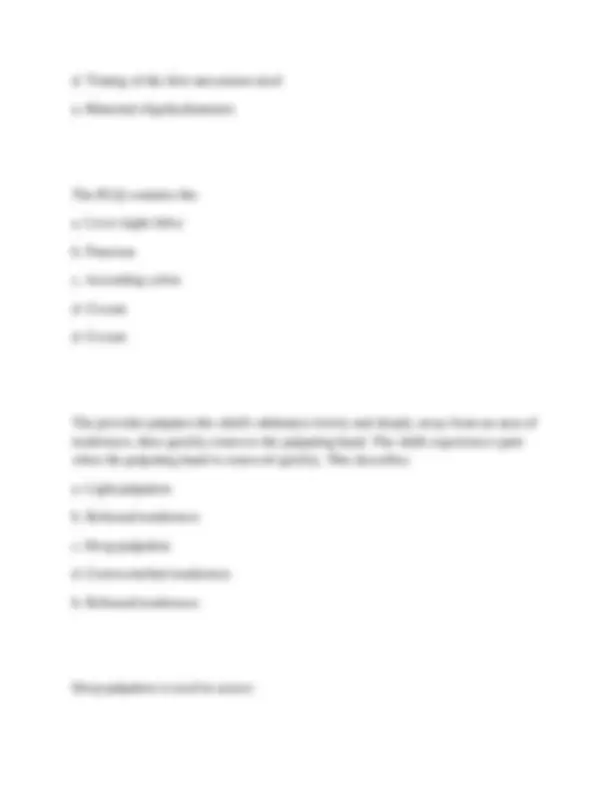
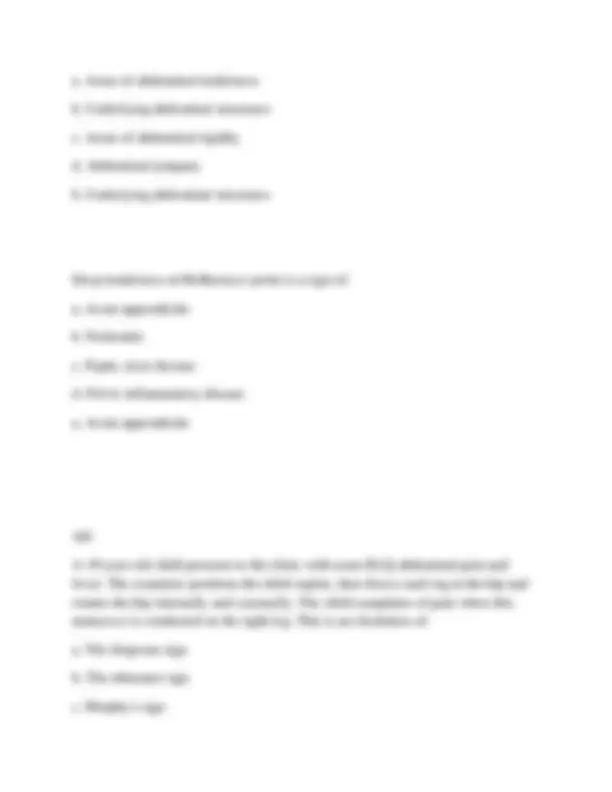
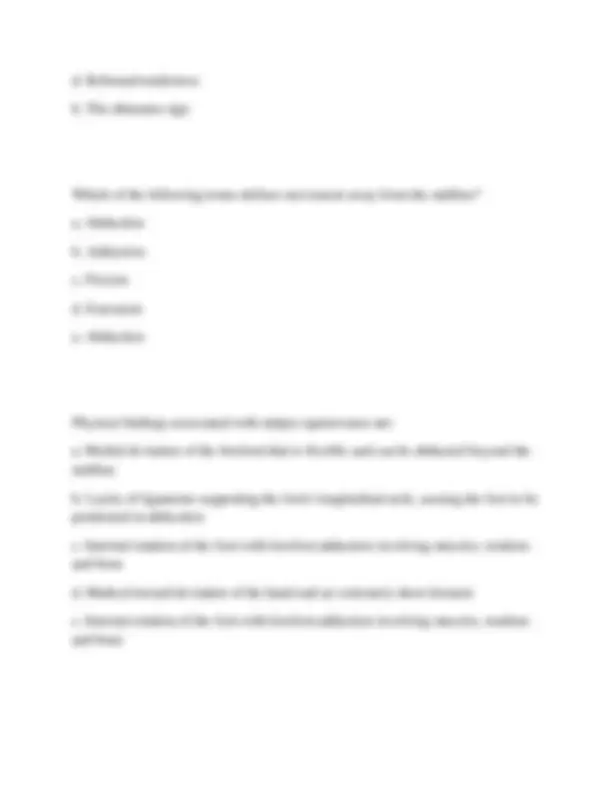
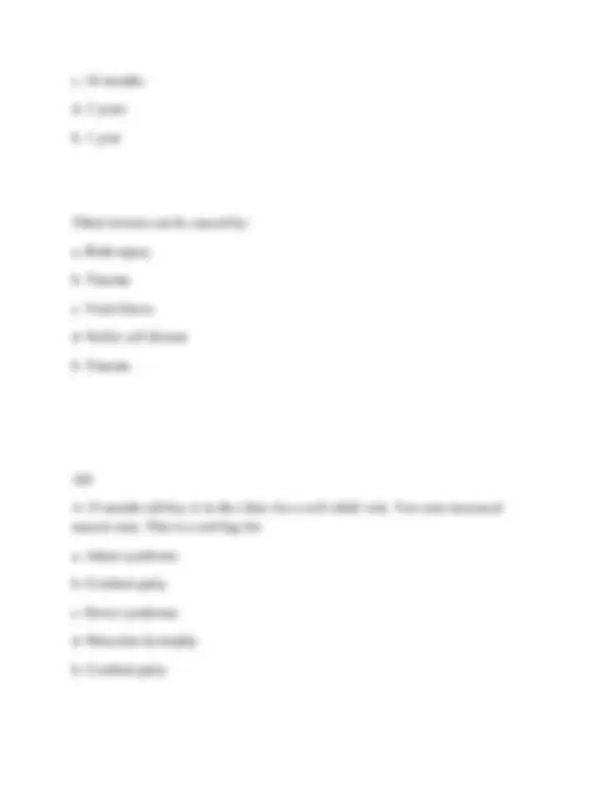
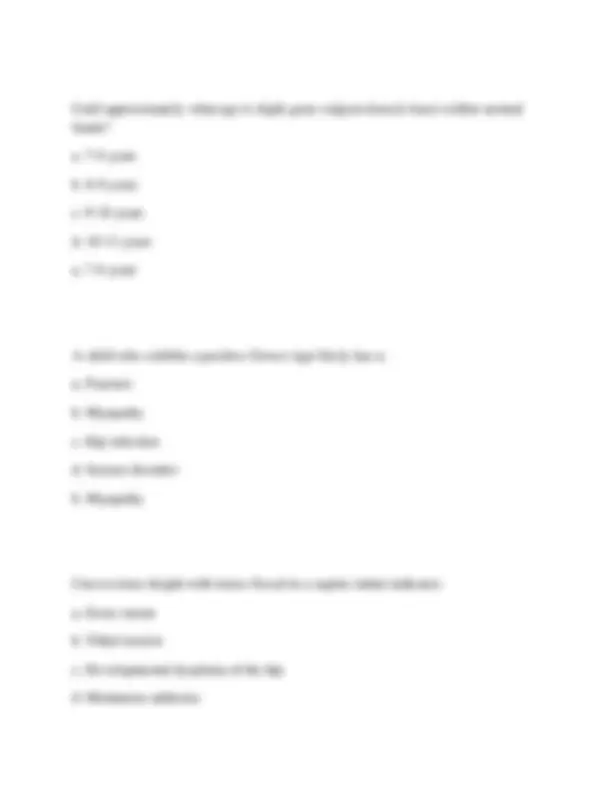
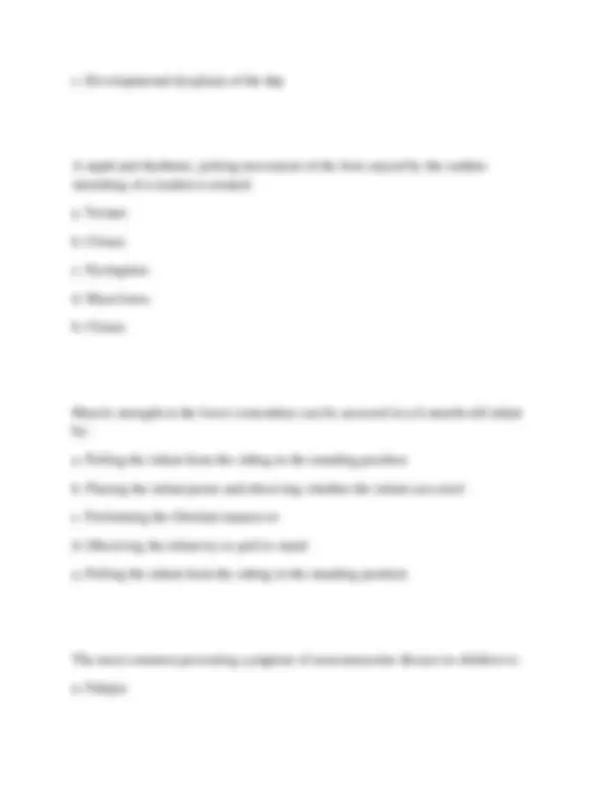
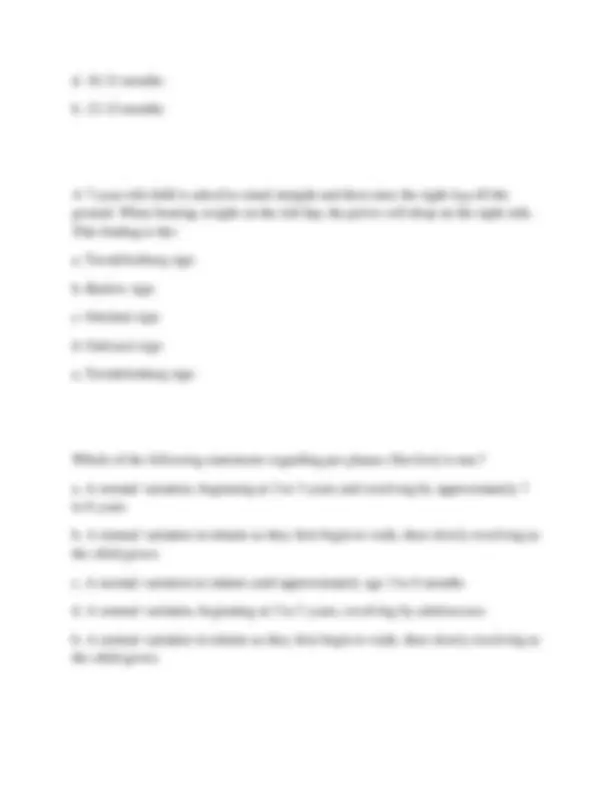
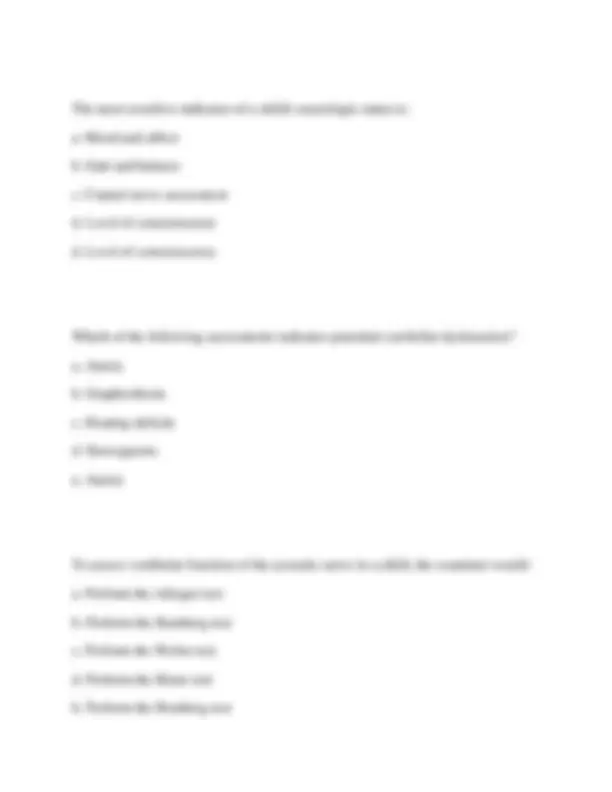
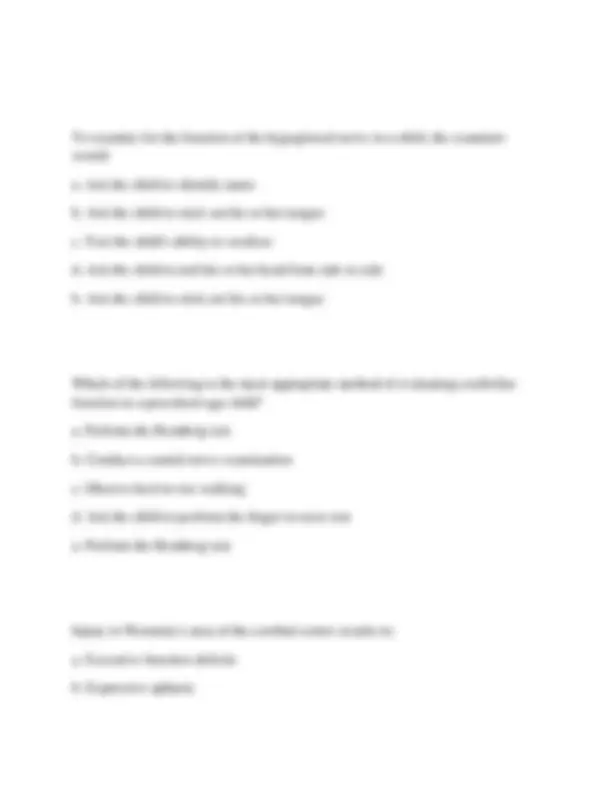
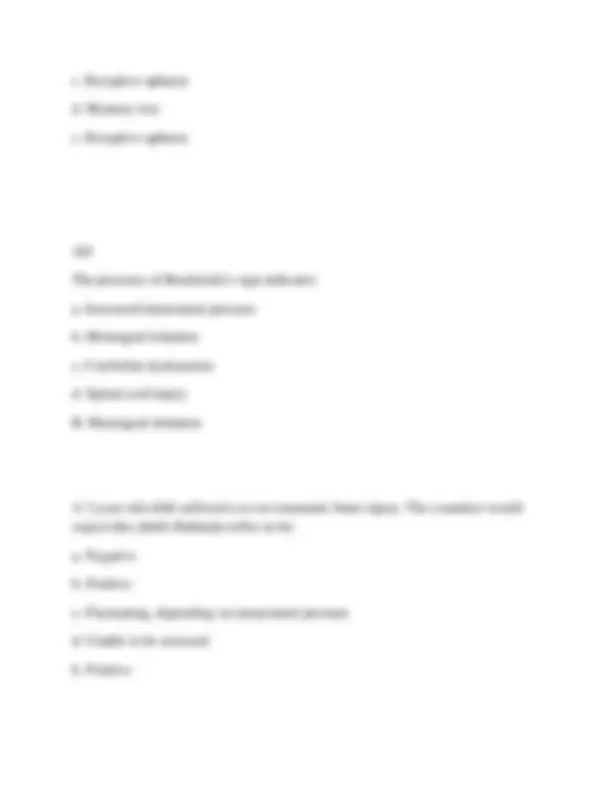
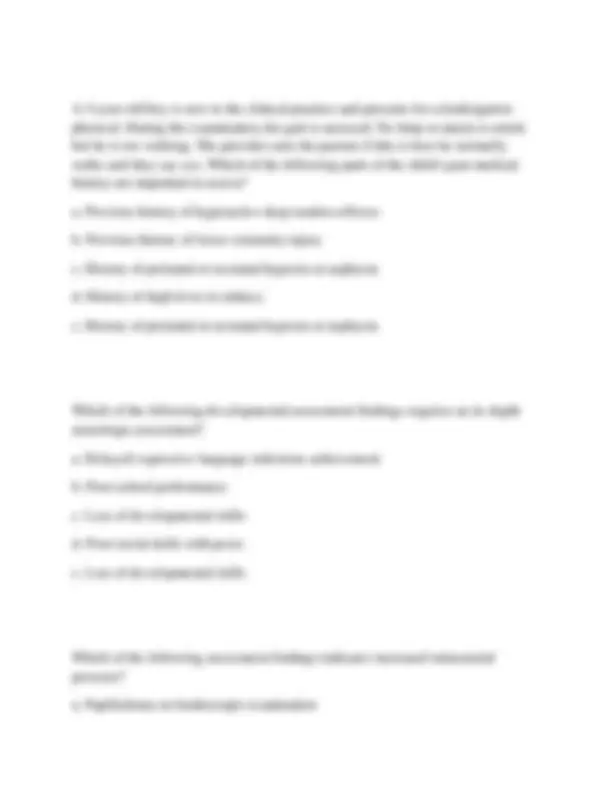
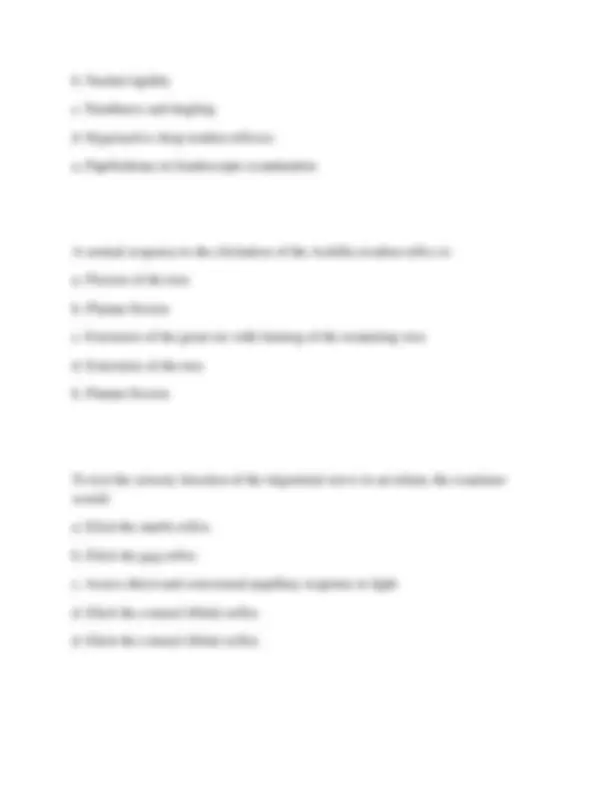
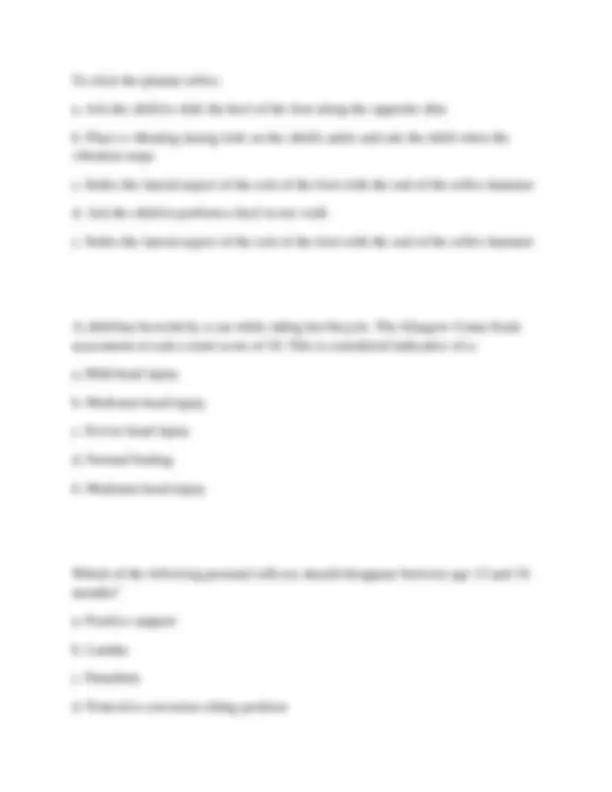
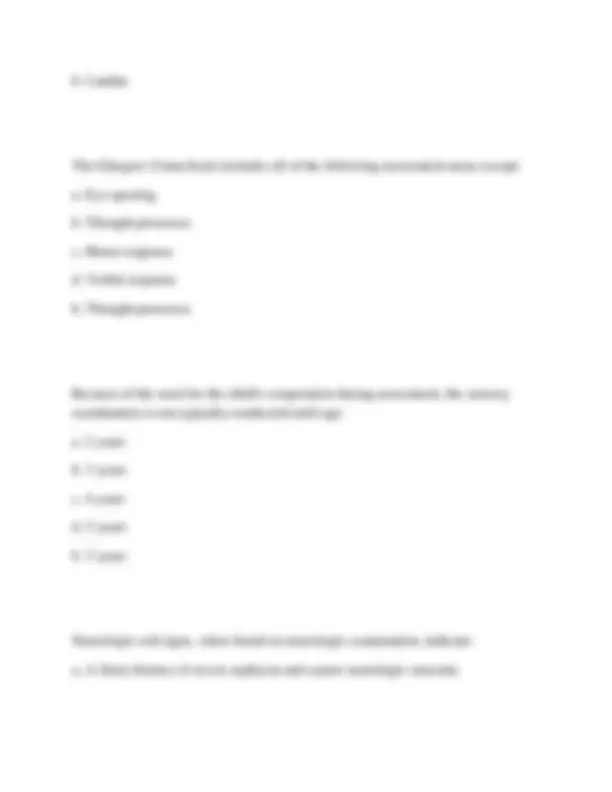
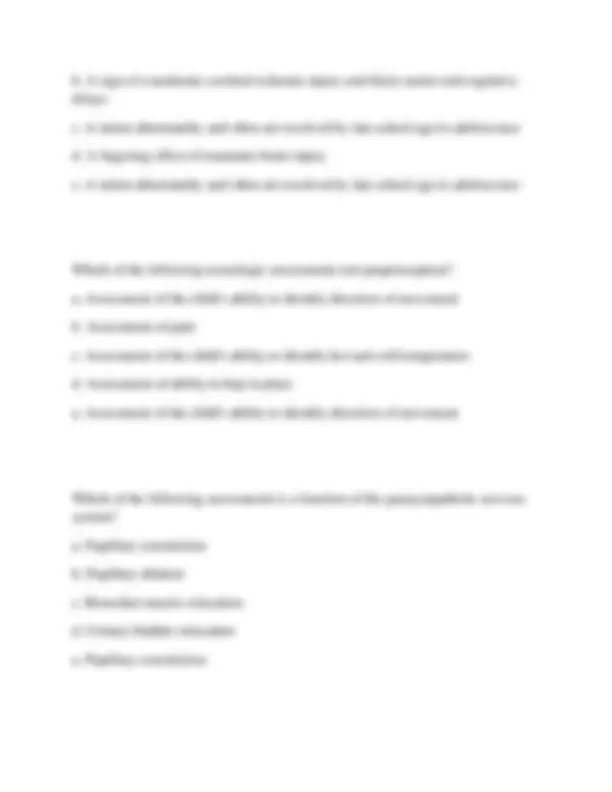
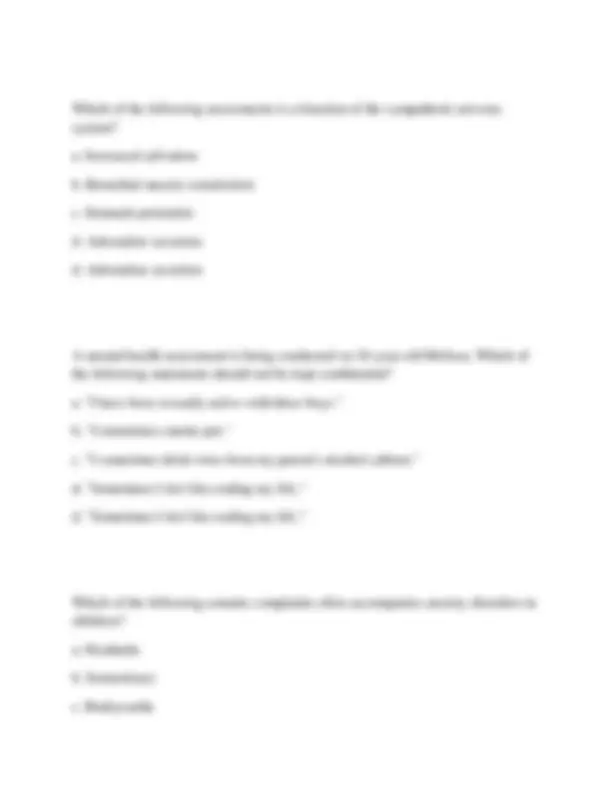
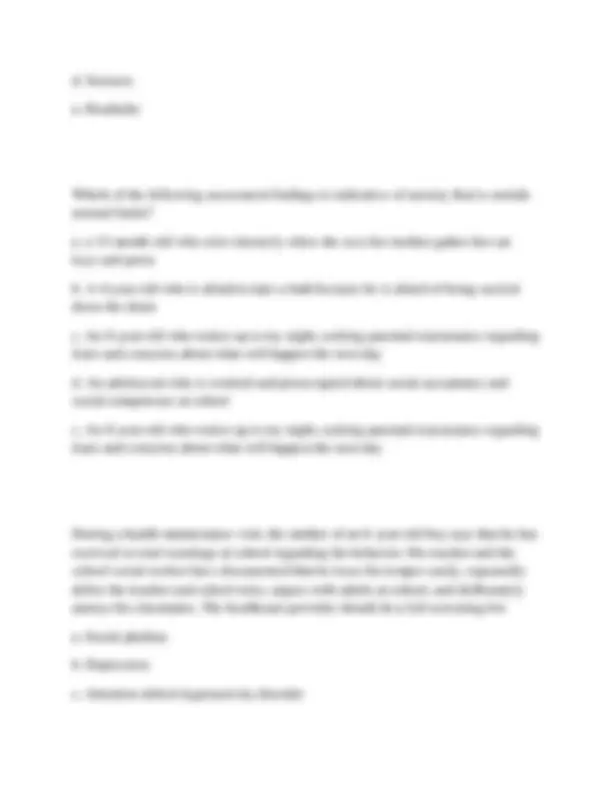
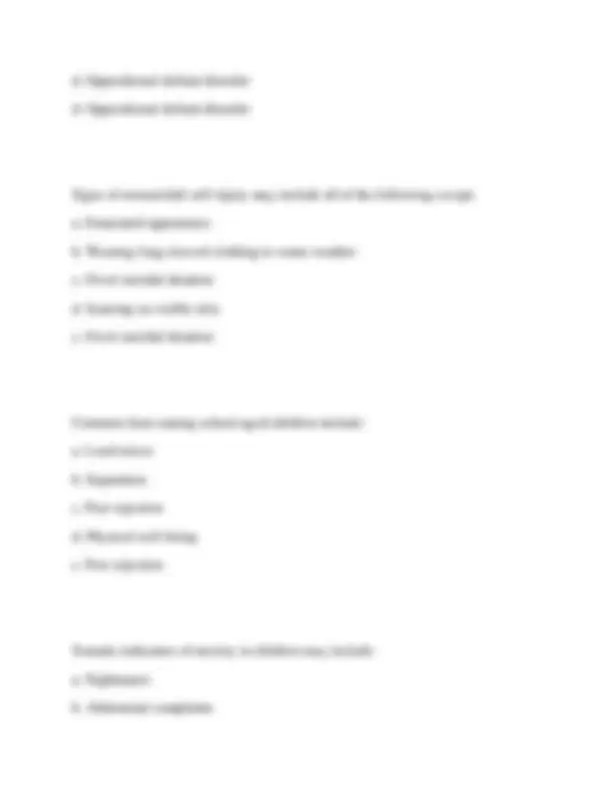
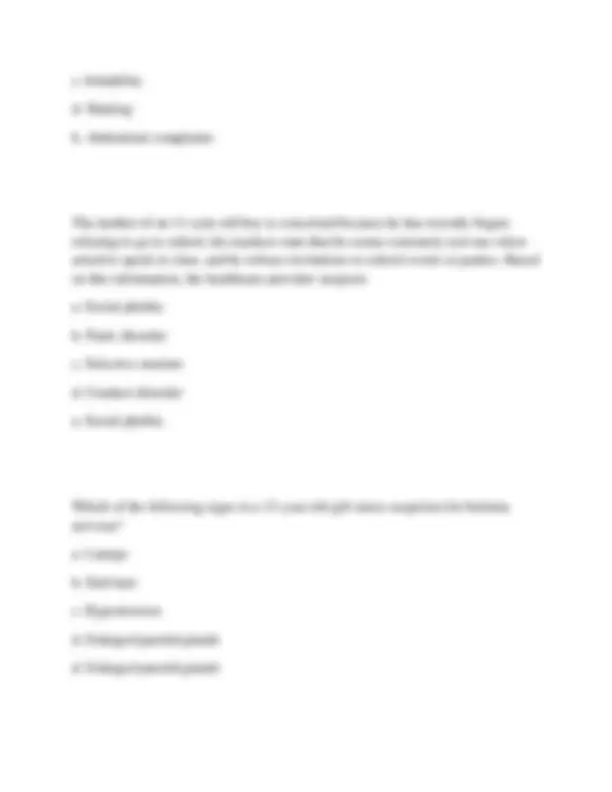
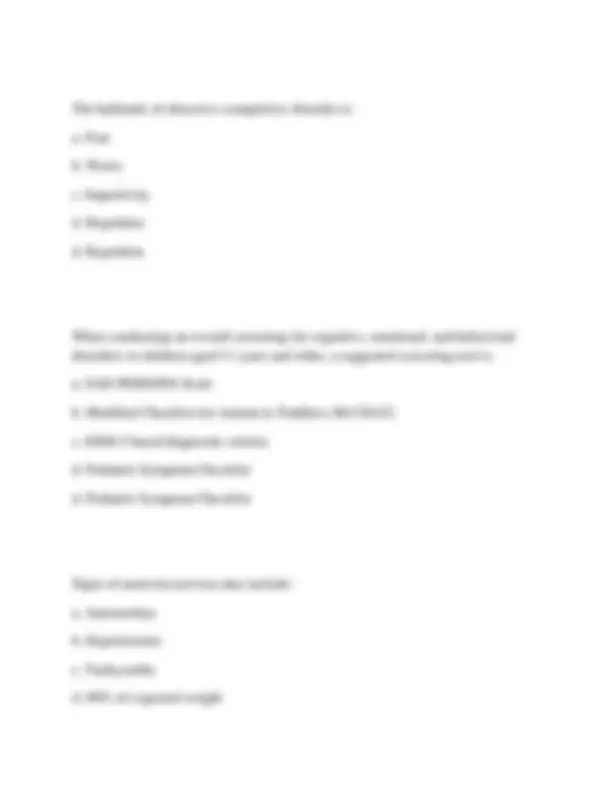
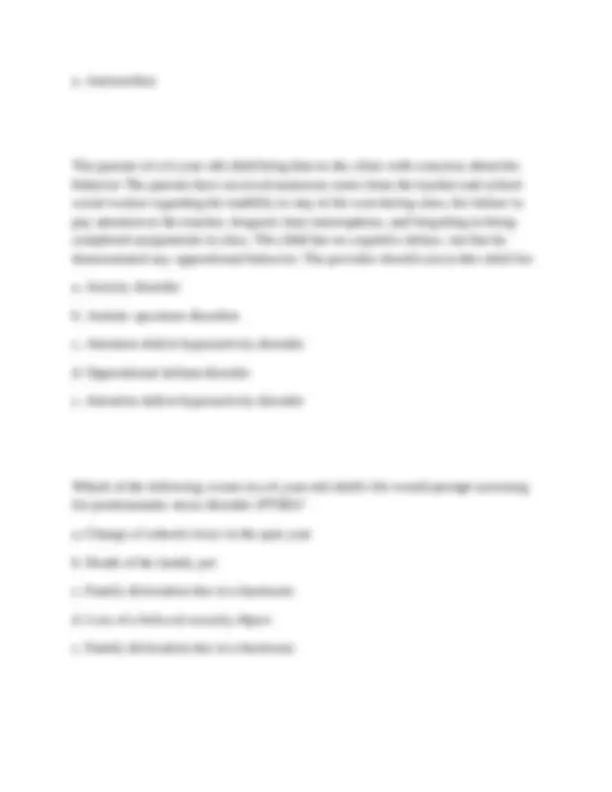
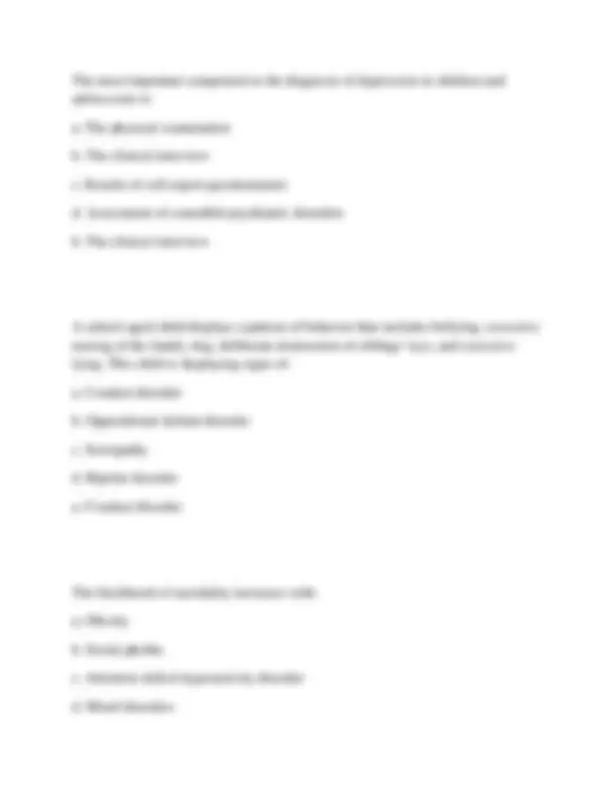
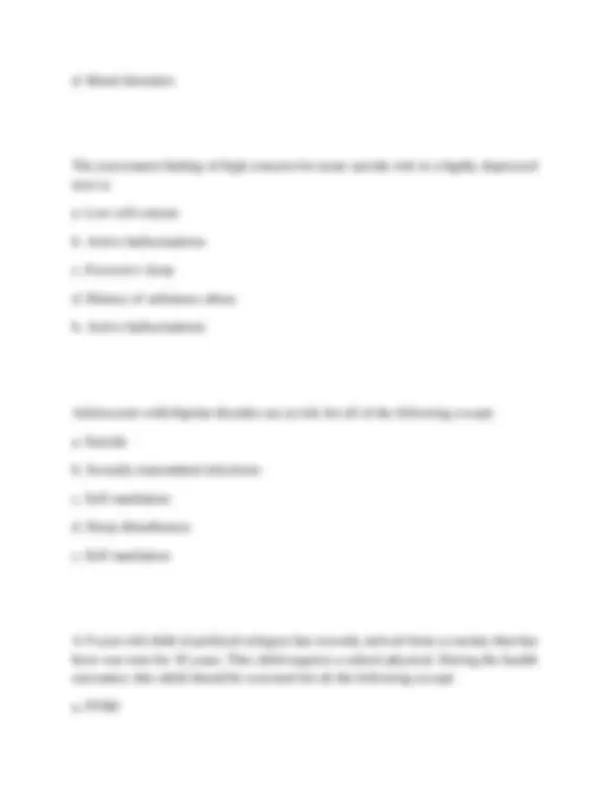
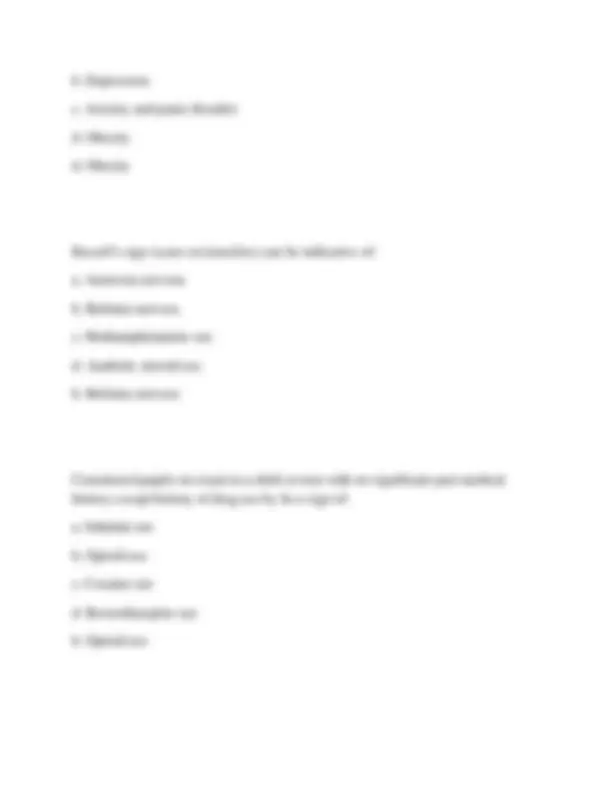
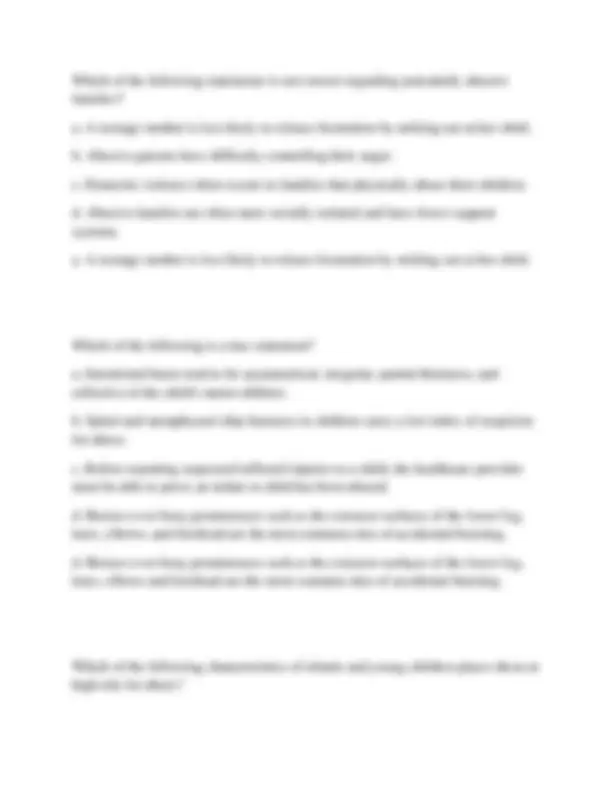
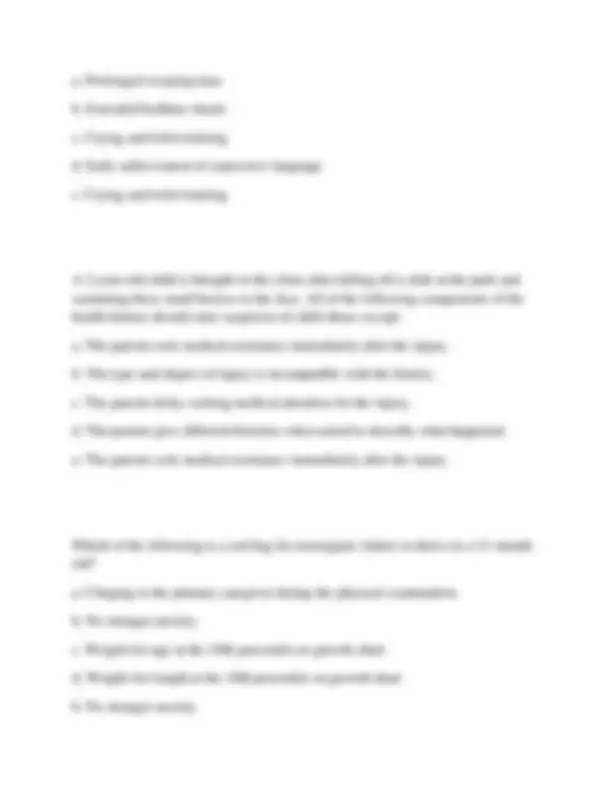
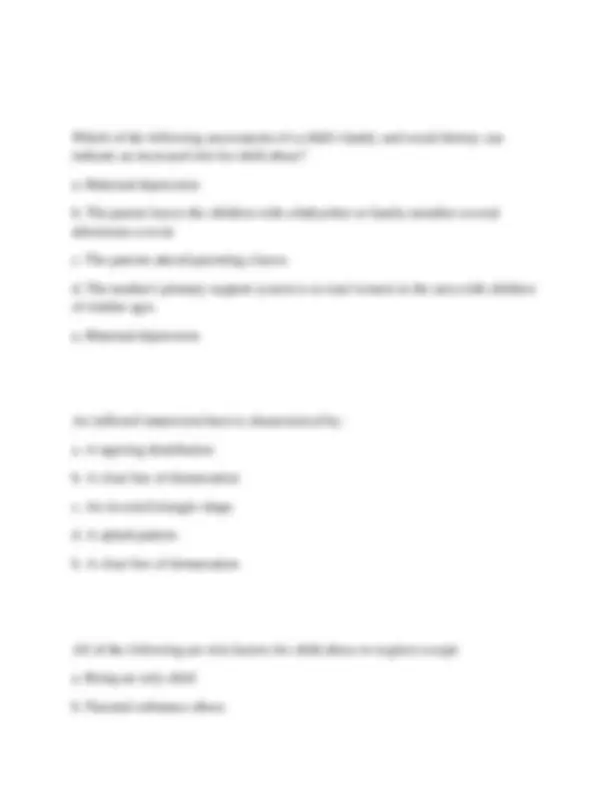
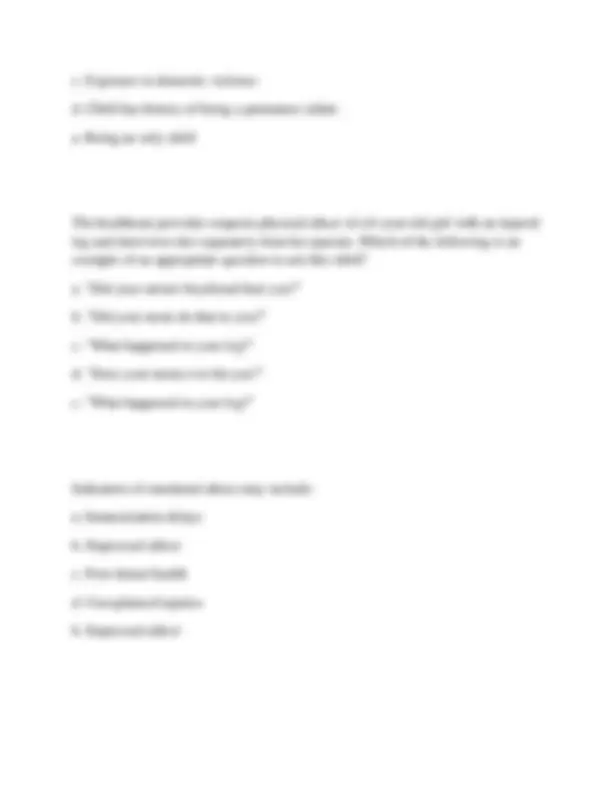
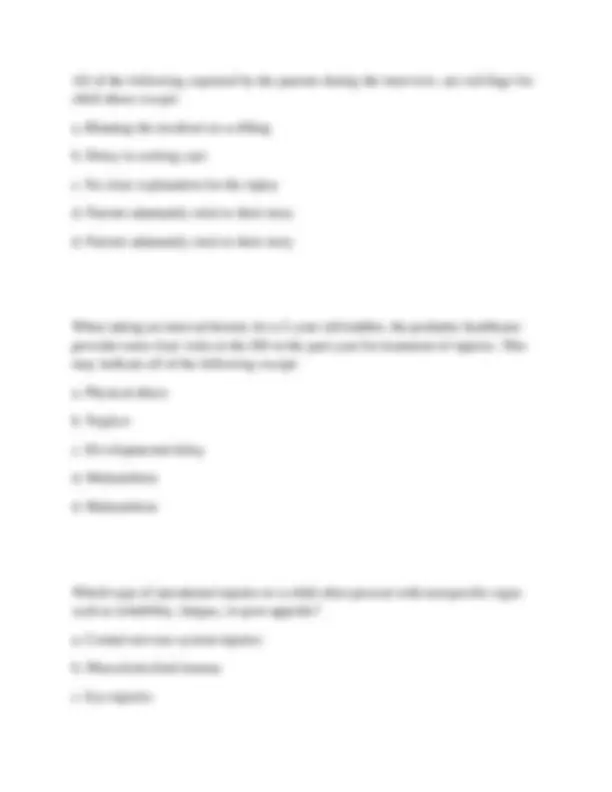
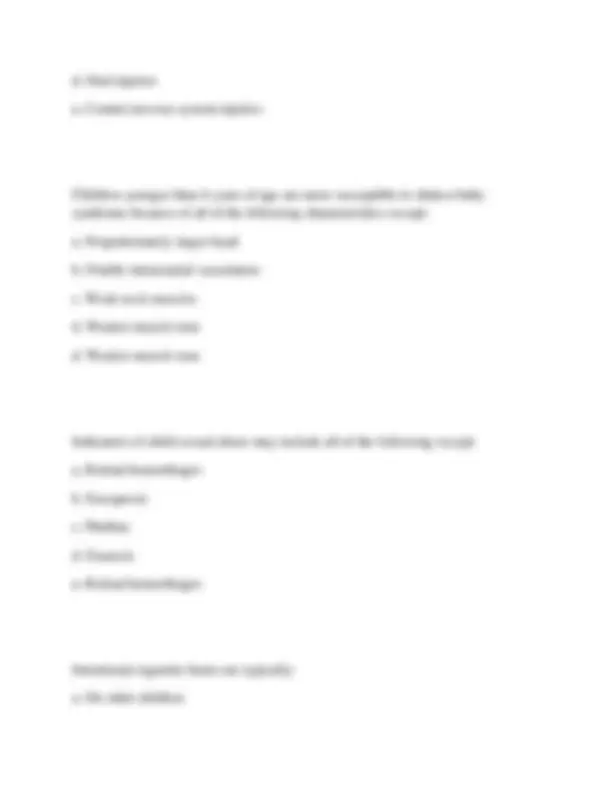
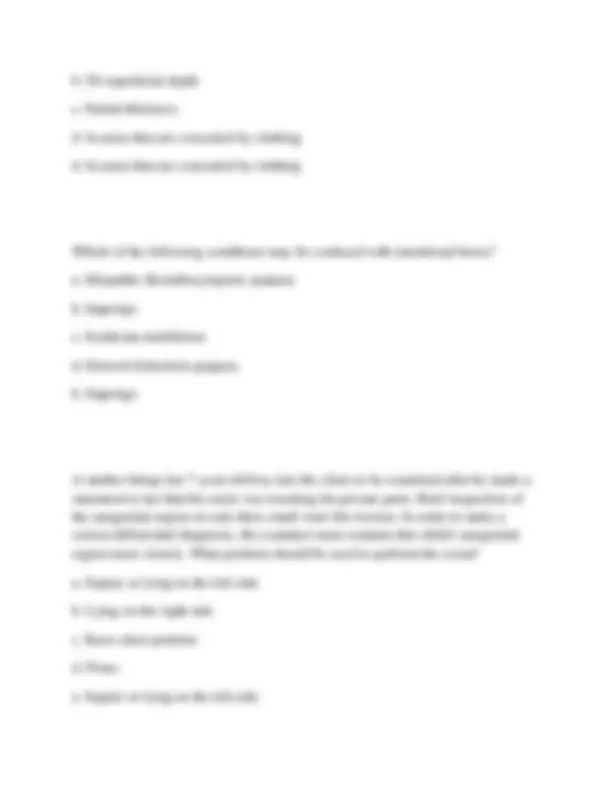
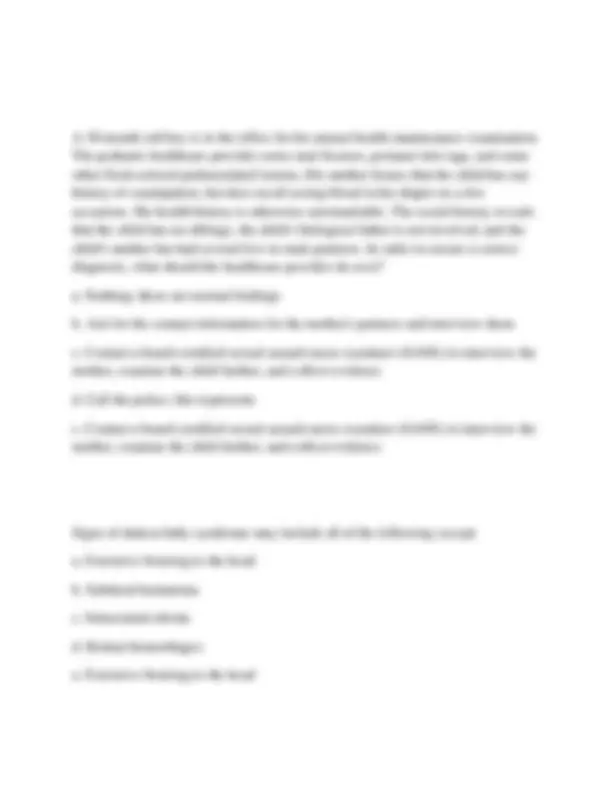
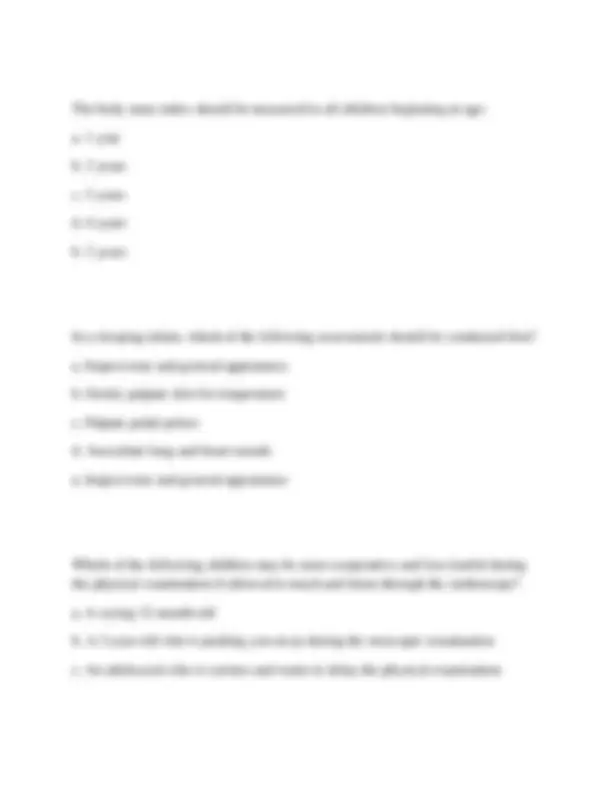
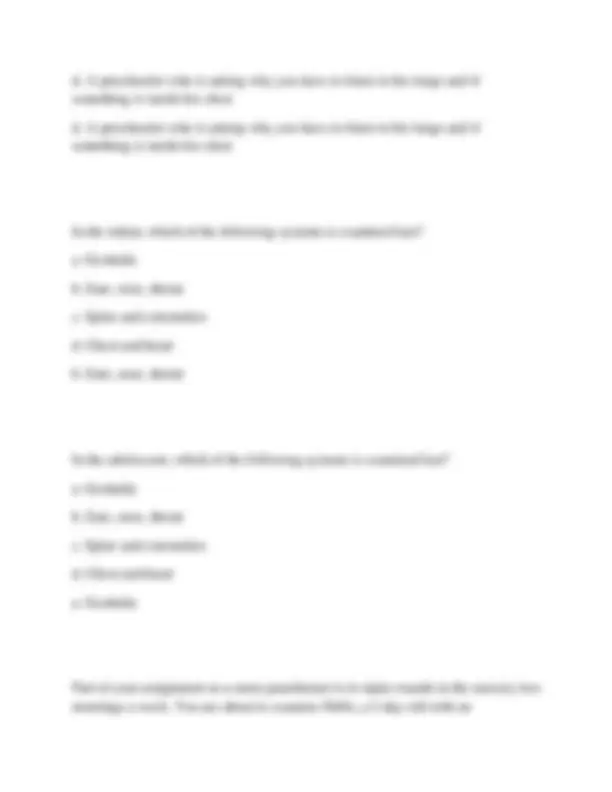
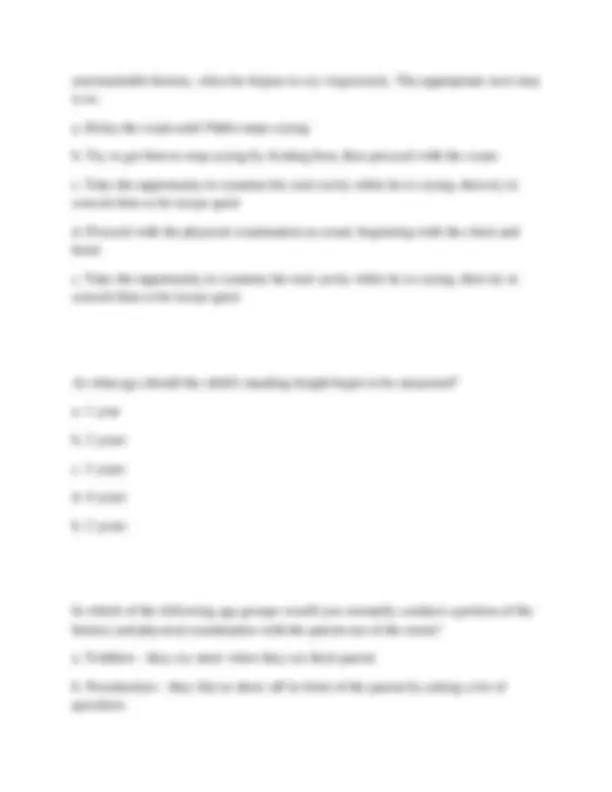
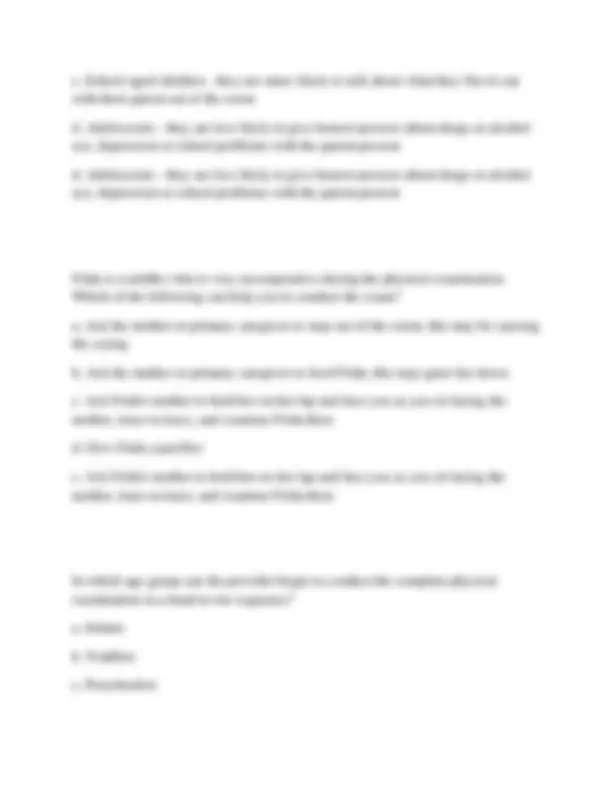



Study with the several resources on Docsity

Earn points by helping other students or get them with a premium plan


Prepare for your exams
Study with the several resources on Docsity

Earn points to download
Earn points by helping other students or get them with a premium plan
Community
Ask the community for help and clear up your study doubts
Discover the best universities in your country according to Docsity users
Free resources
Download our free guides on studying techniques, anxiety management strategies, and thesis advice from Docsity tutors
NURS 614 ADVANCED HEALTH ASSESSMENT FINAL EXAM 2025-2026 NEWEST SUMMER-FALL QUESTIONS AND ANSWERS GRADED A+
Typology: Exams
1 / 48

This page cannot be seen from the preview
Don't miss anything!









































When inspecting the child's abdomen, the examiner notes a midline muscular separation with bulging at the child cries. This finding is a(n):
a. Umbilical hernia
b. Inguinal hernia
c. Omphalocele
d. Diastasis recti
d. Diastasis recti
A 10-month-old infant is brought to the clinic with complaints of cough and rhinorrhea. When auscultating the child's lungs, you note a large, bulging umbilical mass. The mass is easily reducible but increases when the child cries. This assessment finding is a(n):
a. Inguinal hernia
b. Umbilical hernia
c. Gastroschisis
d. Omphalocele
b. Umbilical hernia
The iliopsoas (psoas sign) test is used to identify:
a. Splenic enlargement
b. Costovertebral tenderness
c. Intra-abdominal inflammation
d. Decreased peristalsis or intestinal activity
c. Intra-abdominal inflammation
When auscultating bowel sounds in an infant or a young child, it is essential to use a pediatric stethoscope because:
a. A stethoscope diaphragm that is too large may also encompass lung sounds, confusing the clinical picture
b. A stethoscope diaphragm that is too large may also encompass vascular sounds, confusing the clinical picture
c. A stethoscope diaphragm that is too large may cause pain in a small infant if pressure is applied during auscultation
d. A stethoscope diaphragm that is too large may decrease the child's cooperation
a. A stethoscope diaphragm that is too large may also encompass lung sounds, confusing the clinical picture
Decreased hepatic enzyme function in children from birth until age 3 to 4 years causes:
a. Short drug half-lives
When percussing a child's abdomen, you note tympany. This is indicative of the presence of:
a. Fluid
b. Air
c. Feces
d. Hepatomegaly
b. Air
A dull percussion note at or beyond the anterior axillary line on the left indicates:
a. Hepatomegaly
b. Splenomegaly
c. A normal finding
d. A fibrotic spleen
b. Splenomegaly
Assessment for renal tenderness should be performed with the child:
a. Lying supine
b. Lying prone
c. In a side-lying position
d. Sitting upright
d. Sitting upright
Indirect percussion can be used to detect:
a. Costovertebral tenderness
b. Abdominal masses
c. Rebound tenderness
d. Hepatomegaly
a. Costovertebral tenderness
The lower left quadrant (LLQ) contains the:
a. Left ureter
b. Pancreas (body)
c. Stomach
d. Liver (left lobe)
a. Left ureter
The percussion note that is normally heard over a child's stomach is:
A young child's kidney is more susceptible to trauma because:
a. Until age 5 years, kidneys rupture more easily
b. More of the kidney is exposed because of the thin abdominal wall
c. There is a proportionately larger abdomen in young children
d. The urinary bladder capacity varies
b. More of the kidney is exposed because of the thin abdominal wall
Which of the following is an appropriate response by the provider to a 30-month- old child who is resistant to the abdominal exam?
a. Inspect only; auscultate and palpate only if necessary
b. Ask the child to describe the symptoms in more detail
c. Ask the child if he or she would like to listen to the stomach through the stethoscope and press on the stomach with his or her own hands
d. Defer the exam
c. Ask the child if he or she would like to listen to the stomach through the stethoscope and press on the stomach with his or her own hands
Which of the following findings in the child's prenatal history is relevant when conducting the abdominal assessment?
a. Maternal oligohydramnios
b. Amount of maternal weight gain
c. Perinatal asphyxia
d. Timing of the first meconium stool
a. Maternal oligohydramnios
The RLQ contains the:
a. Liver (right lobe)
b. Pancreas
c. Ascending colon
d. Cecum
d. Cecum
The provider palpates the child's abdomen slowly and deeply away from an area of tenderness, then quickly removes the palpating hand. The child experiences pain when the palpating hand is removed quickly. This describes:
a. Light palpation
b. Rebound tenderness
c. Deep palpation
d. Costovertebral tenderness
b. Rebound tenderness
Deep palpation is used to assess:
d. Rebound tenderness
b. The obturator sign
Which of the following terms defines movement away from the midline?
a. Abduction
b. Adduction
c. Flexion
d. Extension
a. Abduction
Physical findings associated with talipes equinovarus are:
a. Medial deviation of the forefoot that is flexible and can be abducted beyond the midline
b. Laxity of ligaments supporting the foot's longitudinal arch, causing the feet to be positioned in abduction
c. Internal rotation of the foot with forefoot adduction involving muscles, tendons and bone
d. Marked inward deviation of the hand and an extremely short forearm
c. Internal rotation of the foot with forefoot adduction involving muscles, tendons and bone
Assessment findings in an infant with developmental dysplasia of the hip can include:
a. Negative Ortolani sign
b. Positive Galeazzi sign
c. Positive Trendelenburg sign
d. Negative Barlow sign
b. Positive Galeazzi sign
Sustained clonus that extends beyond six to eight beats or clonus that continues past the neonatal period may indicate:
a. Cerebral palsy
b. Increased intracranial pressure
c. Talipes equinovarus
d. Dystonia
a. Cerebral palsy
Which of the following assessment findings is within normal limits for the child's age?
a. A toddler with lordosis
b. A 3-year-old with genu varum
c. A 12-year-old with genu valgum
A 2-day-old with syndactyly
c. 18 months
d. 2 years
b. 1 year
Tibial torsion can be caused by:
a. Birth injury
b. Trauma
c. Viral illness
d. Sickle cell disease
b. Trauma
A 15-month-old boy is in the clinic for a well-child visit. You note increased muscle tone. This is a red flag for:
a. Adam syndrome
b. Cerebral palsy
c. Down syndrome
d. Muscular dystrophy
b. Cerebral palsy
Until approximately what age is slight genu valgum (knock-knee) within normal limits?
a. 7-8 years
b. 8-9 years
c. 9-10 years
d. 10-11 years
a. 7-8 years
A child who exhibits a positive Gower sign likely has a:
a. Fracture
b. Myopathy
c. Hip infection
d. Seizure disorder
b. Myopathy
Uneven knee height with knees flexed in a supine infant indicates:
a. Genu varum
b. Tibial torsion
c. Developmental dysplasia of the hip
d. Metatarsus adductus
b. Muscle weakness
c. Myoclonus
d. Tremors
b. Muscle weakness
Genu varum (bow legs) is normal until age:
a. 3-4 years
b. 4-5 years
c. 5-6 years
d. 6-7 years
a. 3-4 years
The varus deformity of both tibias caused by chronic obesity is:
a. Osgood-Schlatter disease
b. McMurray disease
c. Blount's disease
d. Werdnig-Hoffmann disease
c. Blount's disease
A marked limp or refusal to walk accompanied by fever, point tenderness, or limited range of motion in the hip suggests:
a. Juvenile rheumatoid arthritis
b. Osteomyelitis
c. Cerebral palsy
d. Sacroiliac inflammation
b. Osteomyelitis
The forward bending test is an essential screening tool for:
a. Lordosis in preschool children
b. Kyphosis in school-aged children
c. Torticollis in all age groups
d. Scoliosis in school-aged children and adolescents
d. Scoliosis in school-aged children and adolescents
A normal healthy full-term infant should be able to walk independently by age:
a. 9-12 months
b. 12-15 months
c. 15-18 months
The most sensitive indicator of a child's neurologic status is:
a. Mood and affect
b. Gait and balance
c. Cranial nerve assessment
d. Level of consciousness
d. Level of consciousness
Which of the following assessments indicates potential cerebellar dysfunction?
a. Ataxia
b. Graphesthesia
c. Hearing deficits
d. Stereognosis
a. Ataxia
To assess vestibular function of the acoustic nerve in a child, the examiner would:
a. Perform the whisper test
b. Perform the Romberg test
c. Perform the Weber test
d. Perform the Rinne test
b. Perform the Romberg test
To examine for the function of the hypoglossal nerve in a child, the examiner would:
a. Ask the child to identify tastes
b. Ask the child to stick out his or her tongue
c. Test the child's ability to swallow
d. Ask the child to nod his or her head from side to side
b. Ask the child to stick out his or her tongue
Which of the following is the most appropriate method of evaluating cerebellar function in a preschool-age child?
a. Perform the Romberg test
b. Conduct a cranial nerve examination
c. Observe heel-to-toe walking
d. Ask the child to perform the finger-to-nose test
a. Perform the Romberg test
Injury to Wernicke's area of the cerebral cortex results in:
a. Executive function deficits
b. Expressive aphasia